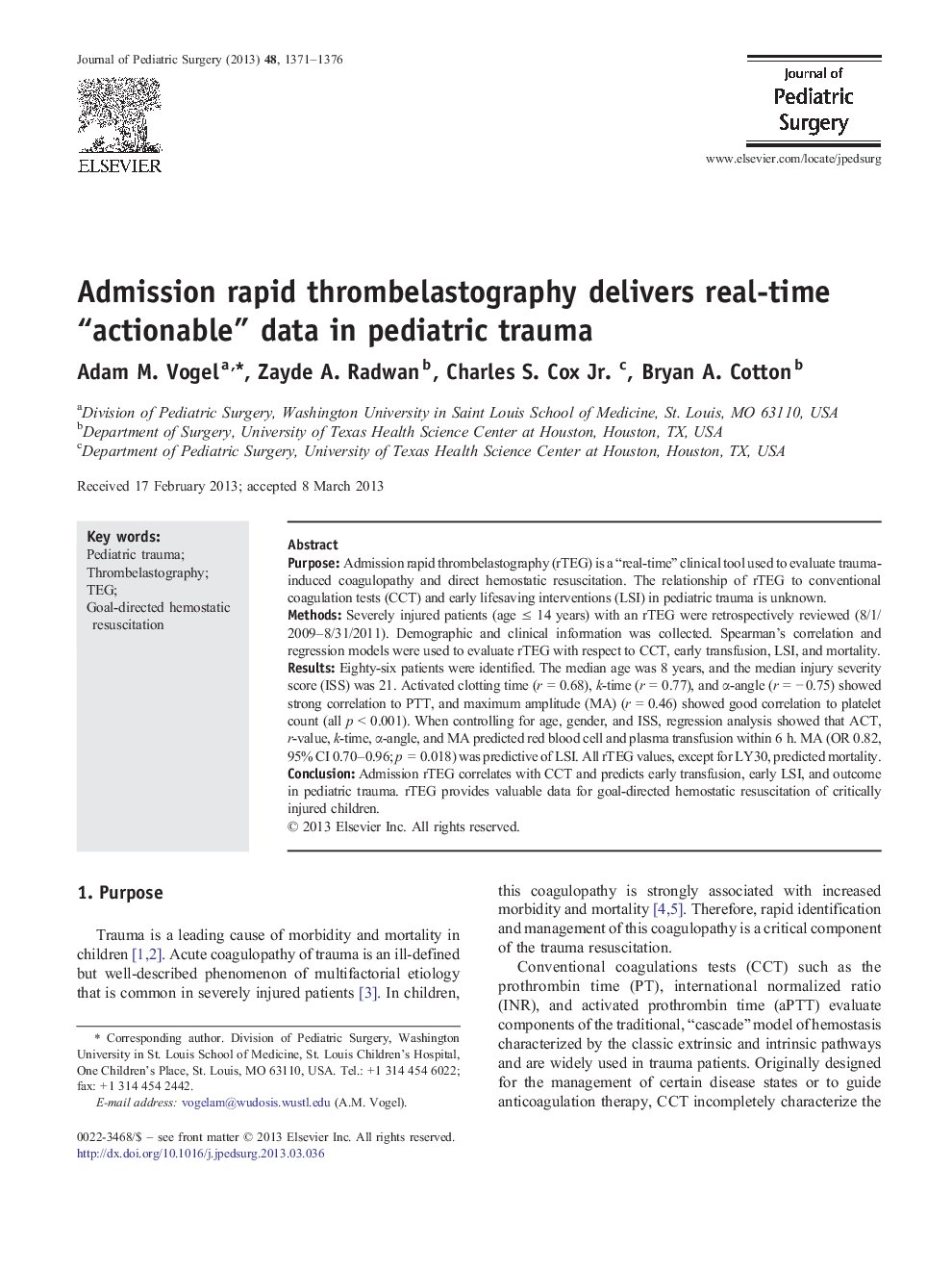| Article ID | Journal | Published Year | Pages | File Type |
|---|---|---|---|---|
| 4156016 | Journal of Pediatric Surgery | 2013 | 6 Pages |
PurposeAdmission rapid thrombelastography (rTEG) is a “real-time” clinical tool used to evaluate trauma-induced coagulopathy and direct hemostatic resuscitation. The relationship of rTEG to conventional coagulation tests (CCT) and early lifesaving interventions (LSI) in pediatric trauma is unknown.MethodsSeverely injured patients (age ≤ 14 years) with an rTEG were retrospectively reviewed (8/1/2009–8/31/2011). Demographic and clinical information was collected. Spearman's correlation and regression models were used to evaluate rTEG with respect to CCT, early transfusion, LSI, and mortality.ResultsEighty-six patients were identified. The median age was 8 years, and the median injury severity score (ISS) was 21. Activated clotting time (r = 0.68), k-time (r = 0.77), and α-angle (r = − 0.75) showed strong correlation to PTT, and maximum amplitude (MA) (r = 0.46) showed good correlation to platelet count (all p < 0.001). When controlling for age, gender, and ISS, regression analysis showed that ACT, r-value, k-time, α-angle, and MA predicted red blood cell and plasma transfusion within 6 h. MA (OR 0.82, 95% CI 0.70–0.96; p = 0.018) was predictive of LSI. All rTEG values, except for LY30, predicted mortality.ConclusionAdmission rTEG correlates with CCT and predicts early transfusion, early LSI, and outcome in pediatric trauma. rTEG provides valuable data for goal-directed hemostatic resuscitation of critically injured children.
